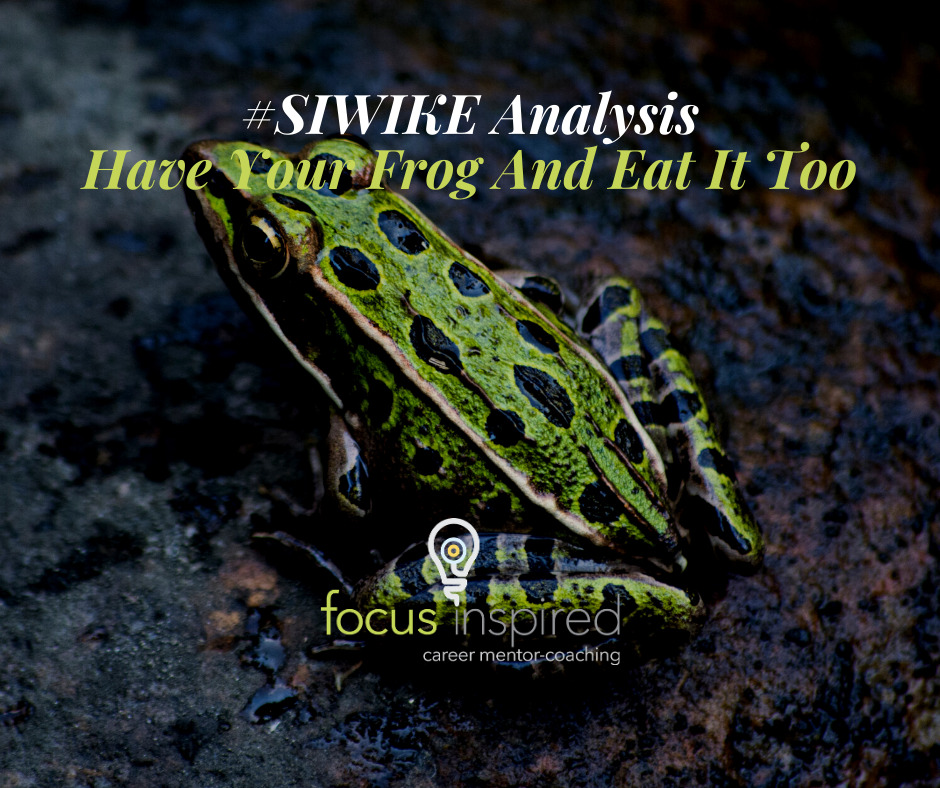
#SIWIKE Analysis: Have Your Frog And Eat It Too
If you are familiar with Luki and the FOCUS Inspired crew, you will likely know about the SIWIKE Tools. This “Stuff I Wish I Knew Earlier” is designed to help you think differently about some of the things you would do in your day-to-day life, and how you can either alter your current methods to make them more efficient or find new ways altogether to make them easier. In Luki’s article about time management and productivity, he tackles different methods on how to best go about your day in an effective and efficient manner without getting burned out.
I would highly encourage you to read the full article for a complete understanding of all of Luki’s techniques, as I won’t be covering all of them here. Instead, I will be focusing on a few of them that I have personally found useful and productive in my life, and hopefully you can find something from my experiences that can help you with yours.
Through Luki’s teachings and opinions, I began to shift my mentality away from strict “time management” towards a different, but similar “energy management” model. This model suggests that you should be building your day based on how much energy or willpower a task takes to complete, and choosing to accomplish your tasks based on that order. It does not, however, mean that you should be ignoring time altogether, but rather using a hybrid of the two to achieve your results. Luki postulates that energy management is a highly overlooked portion of our daily planning, and should be given just as much importance as the amount of time you have in your day.
Based on his ideas and a few things I apparently was doing already, I developed a certain structure in the way I approach a workload. The first important step to get out of the way are the “big rocks”: events or tasks that have a fixed position in time where you must complete it, or are the most important tasks that need to be completed. If they are already scheduled for you, then this step is easy. Set reminders in your calendar, or find a method that works best for you to ensure you are ready for your events at the right time. If these are not fixed in time, you may wish to consider doing so voluntarily. Set aside a time to complete your major tasks so that they are off your plate and off your mind.
With this under consideration, you should consider what your biggest task is. As Mark Twain famously quoted, “Eat a live frog first thing in the morning and nothing worse will happen to you the rest of the day.” While we wouldn’t suggest actually eating a live frog, the concept of “eating your frog” is the idea that you tackle your largest task at the beginning of your day when you have the most energy, and the rest of your day will feel easier in comparison. I would agree that leaving your largest work to the last minute is a recipe for disaster, as you have already spent the majority of your energy doing other things, and completing this task will feel daunting in comparison. The longer you leave your frog, the harder it will be to complete the task, and the more likely it will be that you decide to postpone it for later.
Finally, the third tip I resonated strongly with was the two-minute rule. This is the concept that if something can be accomplished in two minutes or less, do it right away! It is an easy cross off of your list of things to do that you don’t have to worry about throughout the day. By reducing your mental list, you’re freeing up processing power to focus on larger tasks more completely without worrying about other small things you may have to accomplish. You will feel as though you have more finished, meaning you will have a greater amount of drive to complete your list and get it all done.
Taking all of this into consideration, these tips helped me develop the following structure that has helped me immensely in my day-to-day life:
- Don’t forget to budget energy. While time is important, it should be used in tandem with your energy throughout the day to allow you to have a greater chance at successfully accomplishing your list.
- Find your big rocks. Acknowledge the big or fixed things in your schedule and set your reminders to ensure they are completed.
- Eat your frog first. Tackle your largest or most difficult task at the beginning of the day when you have the most energy to complete it.
- Use the two-minute rule. If you have an easy task that takes two minutes or less to accomplish, just do it! Your decreased mental load increases your concentration!
What about you? Which of Luki’s tips helped you the most? Did you find a different strategy that works better for you? If so, we’d love to hear from you!
Follow:Share: